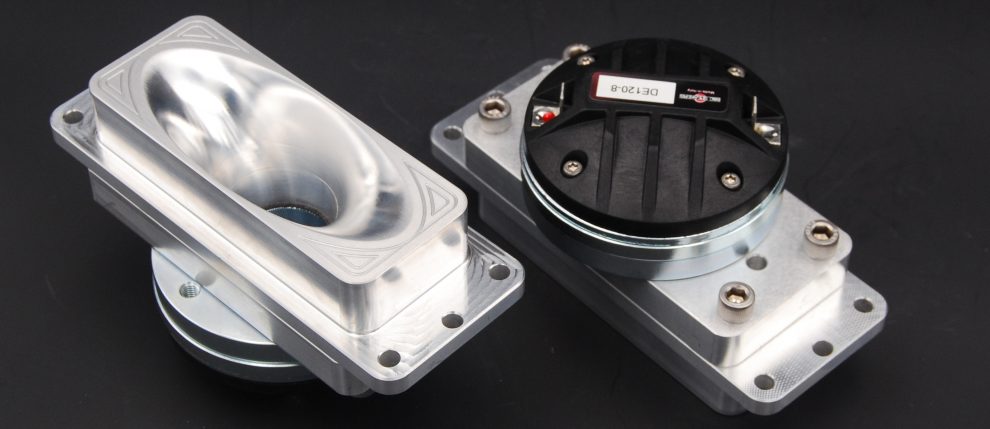Today I am going to demonstrate the cut paths in HSM I have found to yield a surface quality that will suffice for food service without any subsequent finishing. This is a dispensing valve block meant to be sanitized daily or as often as required and has to be easily dis-assembled for access to all surfaces for sanitizing. There are some interesting things to note here and one is how deceptively simple HSM appears. There are right ways and wrong ways to cut and behind the scenes HSM makes choices for you, correct ones by the way, that remove the prompt prompt page page click click stuff so often found elsewhere. As an example in the 2D contour cut path by picking the correct profile I eliminate the boundary of cut and the top height and bottom height you might otherwise have to pick. In the 3D Scallop cut tool path I select top and bottom and one exclude surface and I do not have to go in there and select a bunch of individual surfaces to finish a portion of the part.
Speaking of Scallop cut with HSM I have to say this is my favorite final finishing weapon of choice. There are times where Adaptive with the intermediary step ups can accomplish a satisfactory finish if you do not cut to fast. You load your endmill up enough with high speeds and feeds and depth of cut though you will generate deflection and surface problems. This is true of ANY high speed machining program by the way. When time and production are critical rough with Adaptive and leave just a bit for cleanup with finishing tool paths as I did here for best results.
Scallop by the way was the tool path that replaced CAMWorks for Solid Edge’s Constant Step-over tool path which was the only reason I had entertained using CW4SE at all after getting HSM. I have SE ST8 with CW4SE loaded on my main workstation but have yet to cut a part with it. I went in there to see how it was doing and refreshed my memory on how complicated it all was. I quickly regained my sanity and left. As a matter of fact the only reason it is still on here is I had intended to do comparisons between Volumill and Adaptive. Adaptive has always won these though so far and as I type this I think I just don’t care what Volumill or CW4SE do anymore. Time to yank CW4SE off the PC and close another chapter of my life. Too expensive too complicated and run by a company whose only real concern for you as a user historically seems to be that you pay their exorbitant unearned yearly fees. Don’t let the door hit you on your way out.
Geometric’s CW4SE by the way is a perfect example of why you never want software without a permanent license. If you were foolish enough to buy there are only certain versions that work well and if you were stuck into the upgrade when the chattel owners decide to pay to play situation who knows how long you could be shut down or the time to be wasted struggling with what the heck did they do now. It took many months before ST7 had a halfway working version of CW4SE. At least with permanent seats you can pick what works best for you even if you have to stay on last years CAD to do so. If you don’t think this is important now experience will one day demonstrate why it is and it will consume your earnings and time as it does so.
Anyway here is picture of the section of the part being cut.
Here is a picture of the part with a Tri-Clamp fitting in place. This will be welded in and polished out by hand as the last step in production. Notice by the way that the fitting produced to NSF standards has basically the same finish as the cut surfaces. 
Here is the video. https://youtu.be/McxGa1Vwnt8

Awesome stuff Dave! Scallop is definitely an awesome finishing tool in HSM.
It is my favorite for sure.
Nice work, Quick Tip. If you control select all multiple opperations before selecting store as template then you be able to have all the toolpaths stored in order, in one template.
Also, no need to wait for the roughing to finished calculating before doing the finishing passes. It will calculate in the background.
Thanks Al. Now you bring up something I want to know about. Where is the documentation for Templates so these little goodies can be put to use?